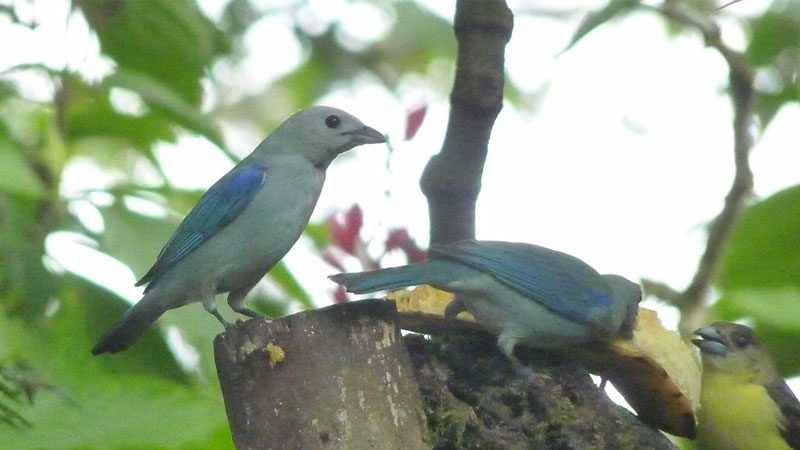
Blue-grey Tanager
McCormick Bird House
Did You Know?
- Males and females build deep, cup-shaped nests up to 66 feet above ground. They are made from smooth materials and leaf strips, then lined with moss and spider webs.
- They may also use the nests of other birds, modifying those that were created by larger species or stealing ones made by smaller birds.
- These birds thrive near human settlements and can often be seen using bird feeders.
Don’t See the Animals?
Why aren’t animals visible at all times? To promote positive animal welfare, we provide animals with choices. They can choose to spend time in areas that are out of public view.

Take an Animal Home with You
Overview
Scientific Name: Thraupis episcopus
Class: Birds
Diet: Fruit (also insects and nectar)
Range: Mexico, Central and South America
Endangered Status: Least Concern
More Information
Blue-grey tanagers are named for their two-toned coloration: gray or light blue on their head and chest, deepening to bright blue along their wings and tail. They are 6 inches long and weigh just 1 ounce. These small tropical birds have black eyes and a short, think, bluish-gray bill. They prefer semi-open areas and high spaces, often feeding at the tops of trees.
Blue-grey tanagers live in pairs but sometimes form large flocks. They are known to be active and aggressive toward other species. During breeding season from March to September, females lay one to three eggs on consecutive days, incubating them for two weeks. Both parents feed the chicks and the young fledge at around 18 days. They may have two clutches per season.
